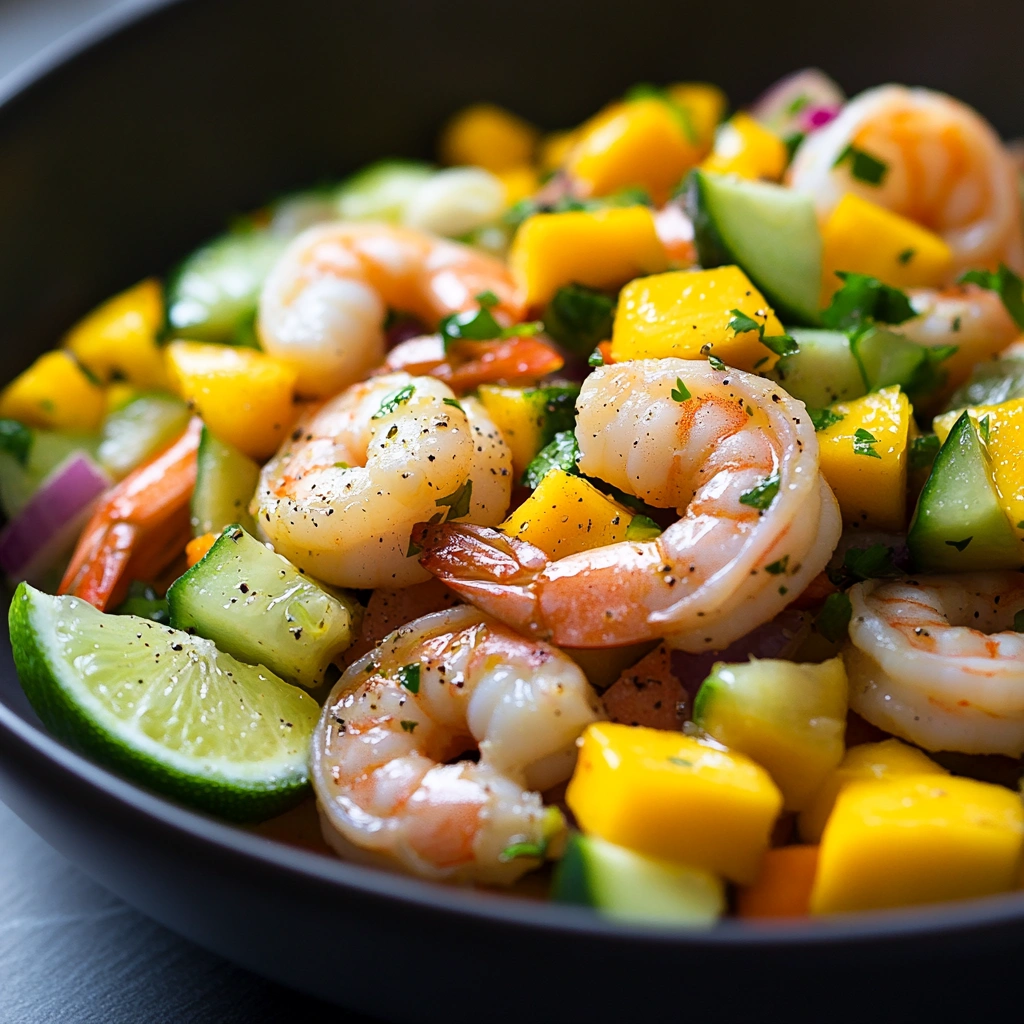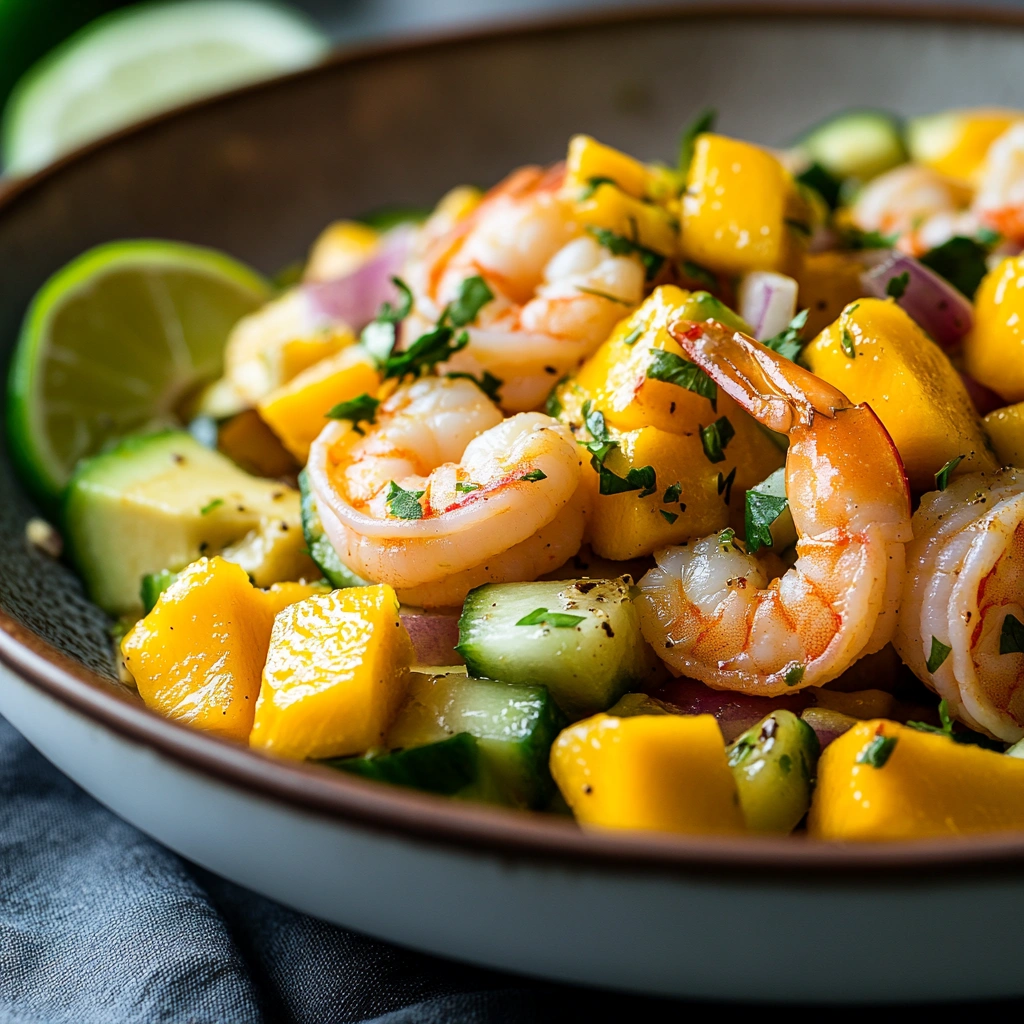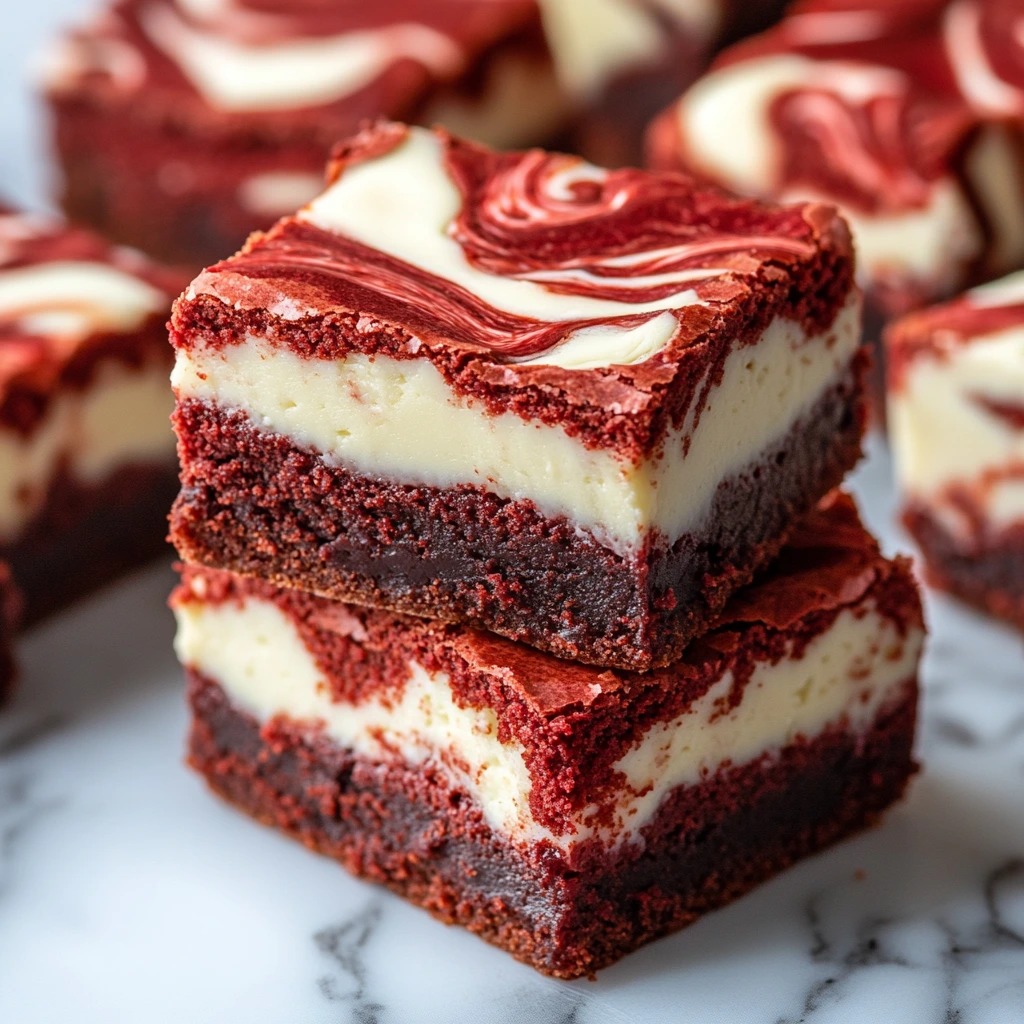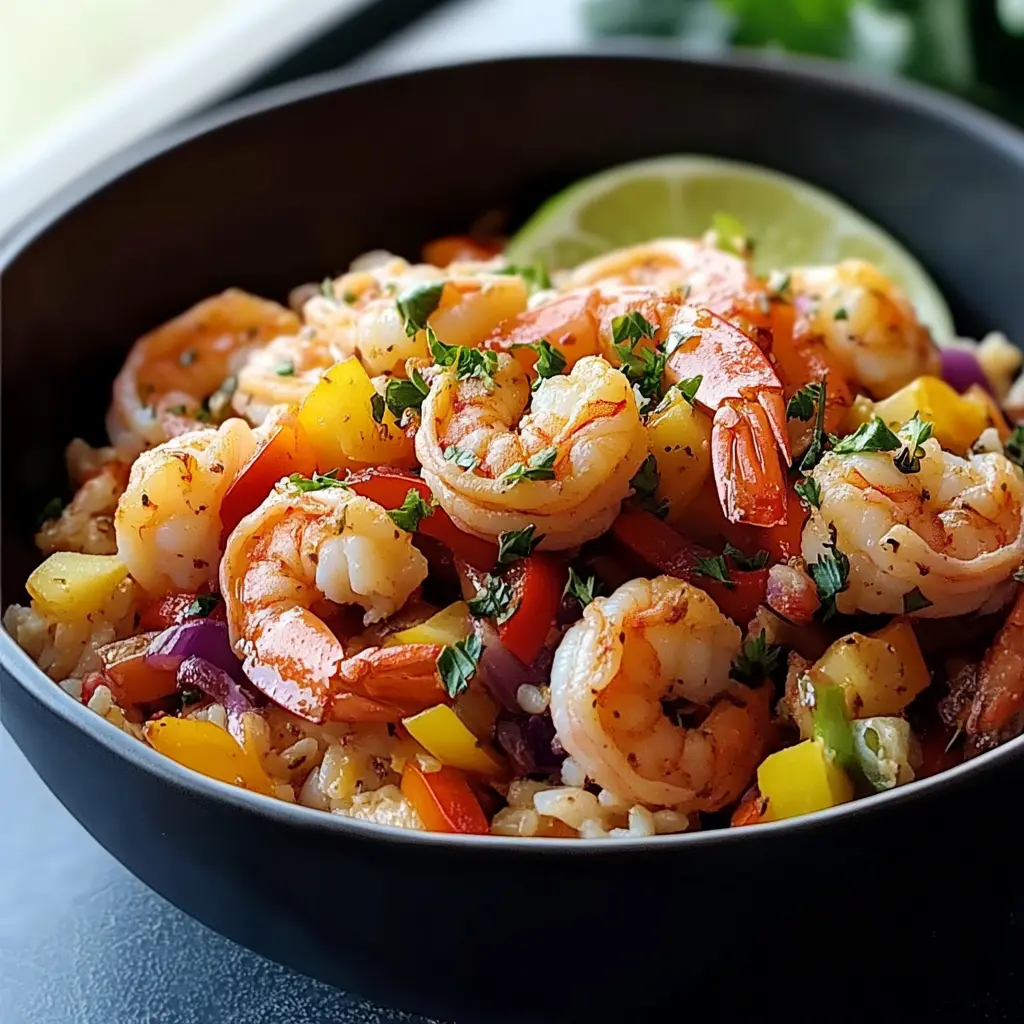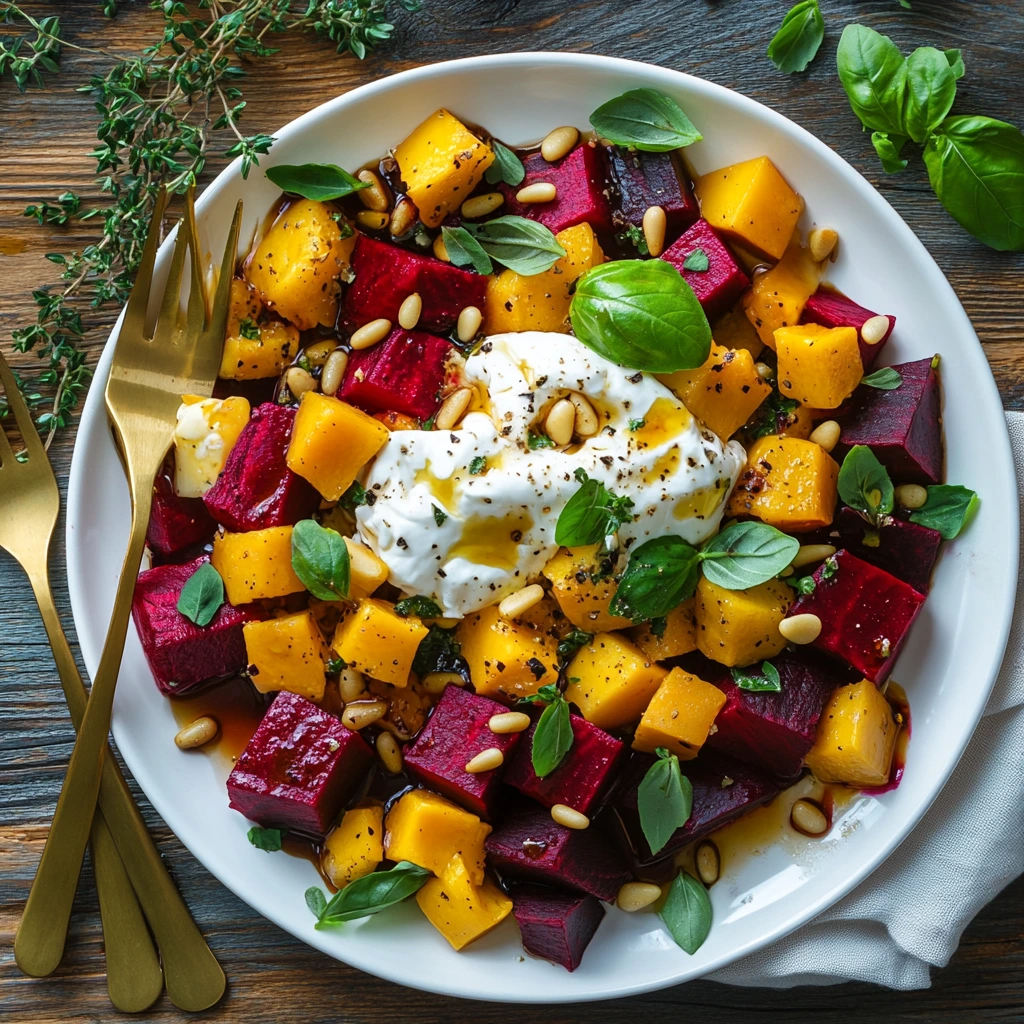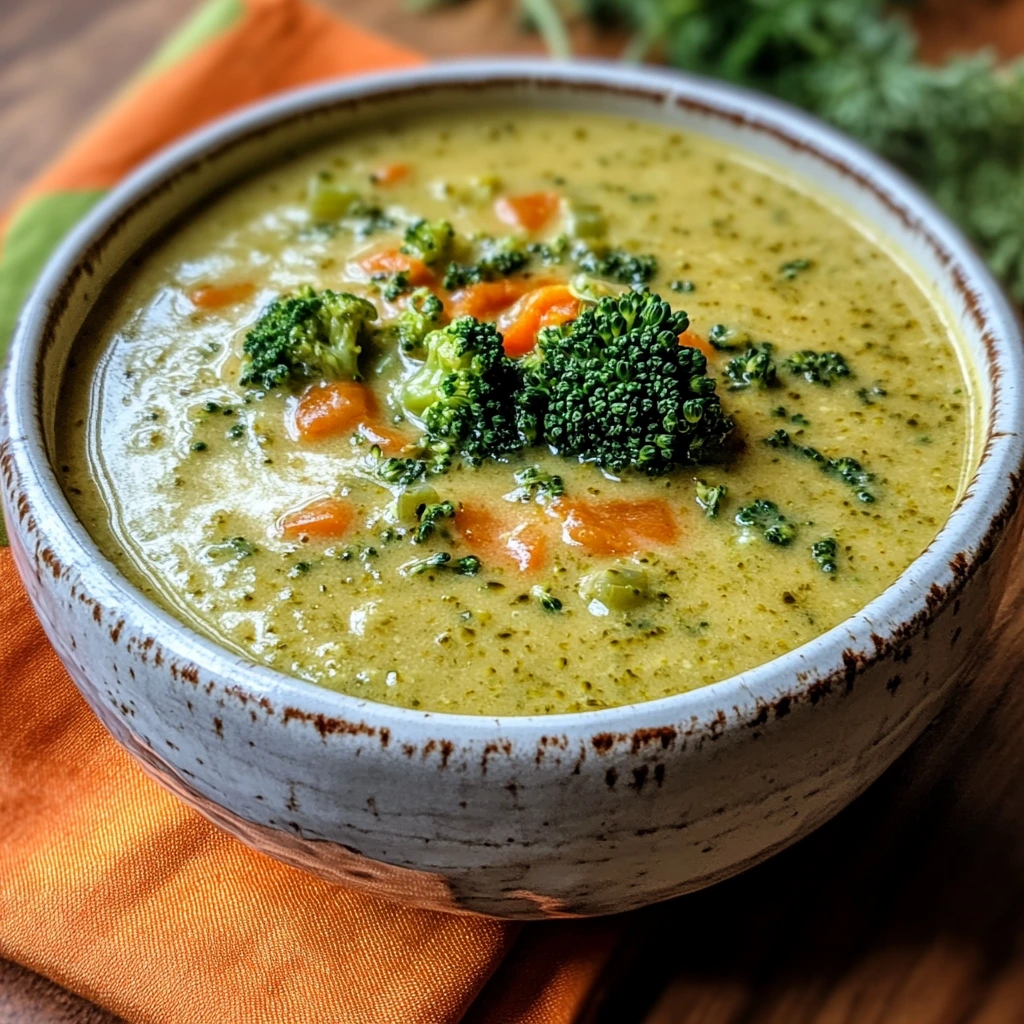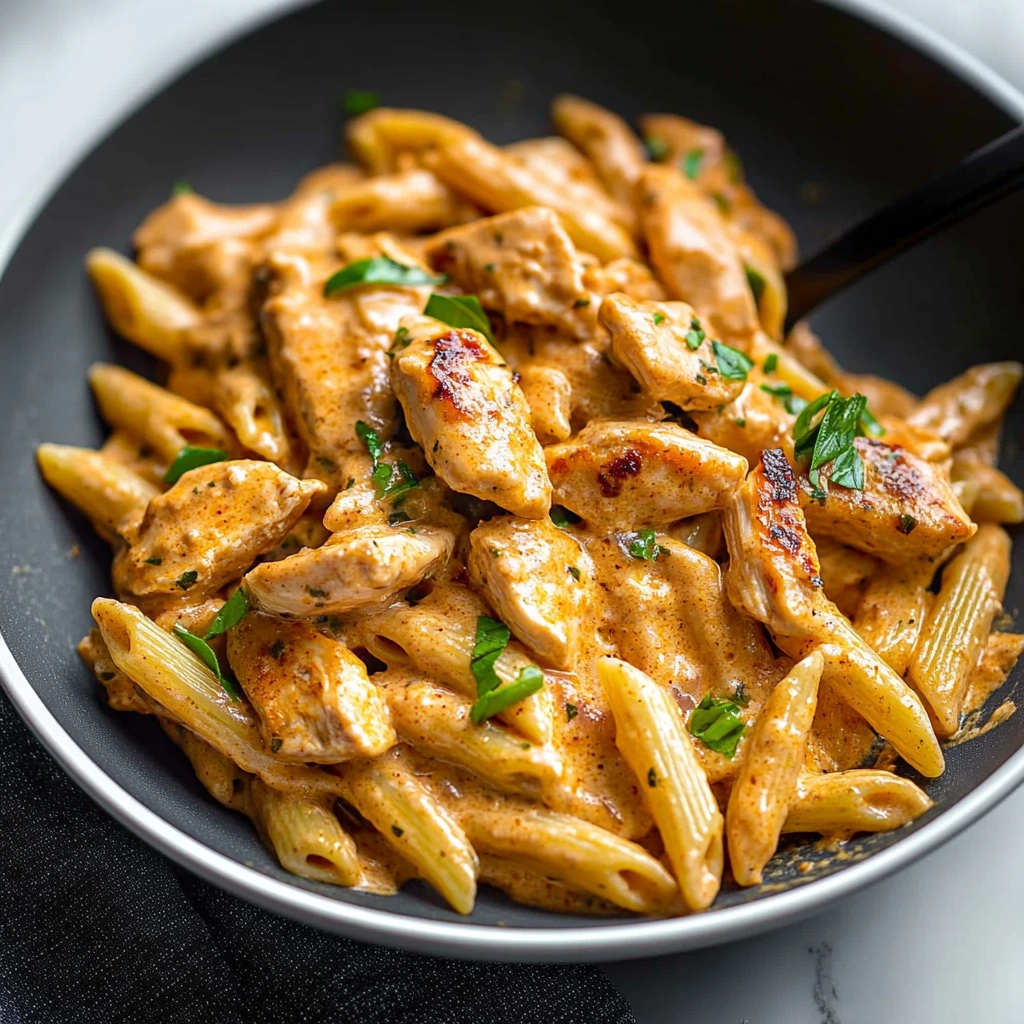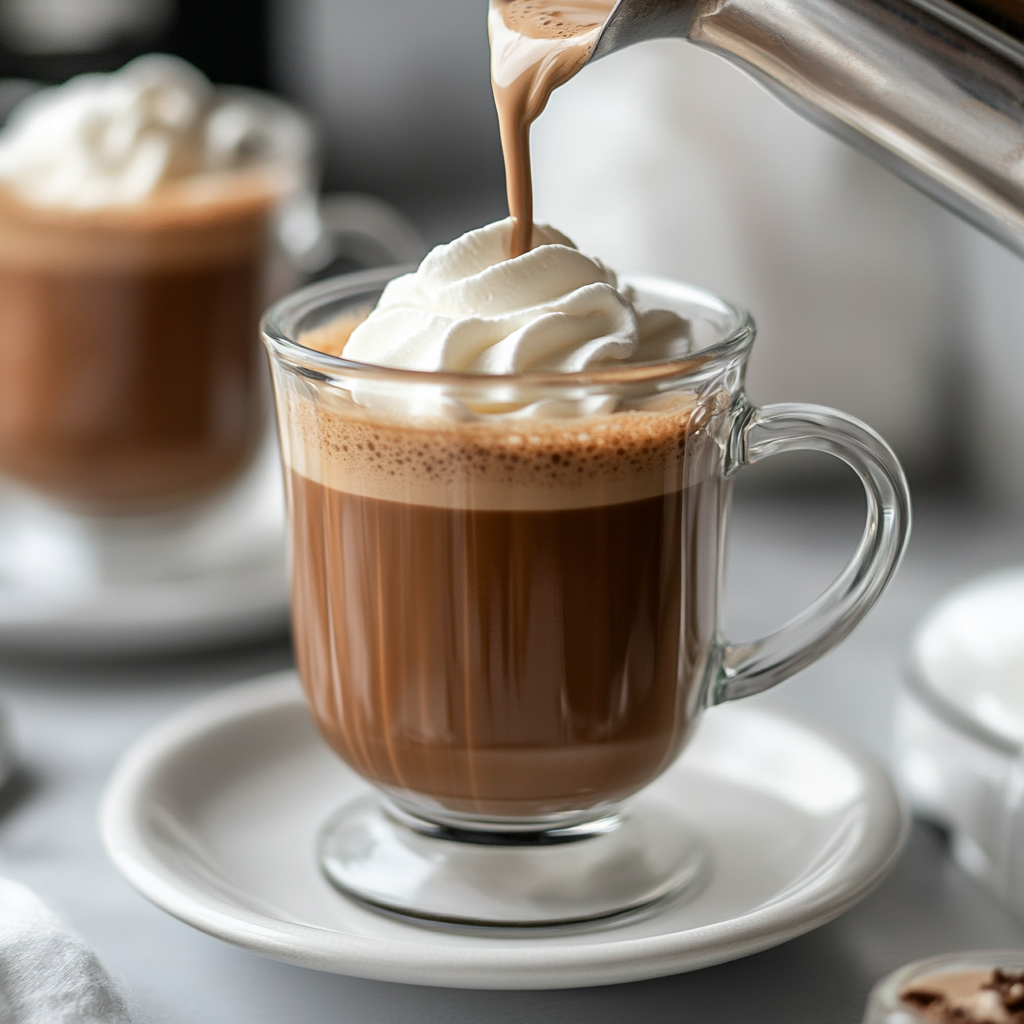If you’re looking for a dish that captures the essence of summer in a single bite, mango shrimp ceviche is it. Bursting with vibrant colors, zesty citrus, and the perfect balance of sweet and savory, this tropical twist on the classic Latin American dish brings together fresh shrimp, juicy mango, and crisp vegetables in a refreshing and light appetizer—or even a main course.
Ceviche is traditionally made by “cooking” seafood in acidic citrus juice, most commonly lime or lemon. The acid changes the protein structure of the shrimp in a way that mimics heat cooking, giving it a tender, flavorful bite. But what truly sets mango shrimp ceviche apart is the sweet, tropical element the mango brings. It contrasts beautifully with the tangy lime juice and spicy jalapeño, making each bite a burst of layered flavor.
This dish isn’t just delicious—it’s also healthy, high in protein, and low in fat. Whether you’re planning a summer barbecue, a beach-themed party, or simply want a light, no-cook meal for a warm evening, mango shrimp ceviche fits the bill. It’s easy to prepare, highly customizable, and sure to impress both casual snackers and foodies alike.
In this guide, you’ll learn everything from the origins of ceviche and the best ingredients to use, to step-by-step preparation instructions and serving ideas. Get ready to fall in love with one of the most refreshing dishes you’ll ever taste.
What is Ceviche? A Quick Look at Its Origins (300 words)
Ceviche is a beloved dish throughout Latin America, known for its bright, fresh flavors and minimalistic preparation. At its core, ceviche is a method of “cooking” seafood using the acidity of citrus juice—most commonly lime or lemon—instead of heat. The acid denatures the proteins in the fish or shrimp, giving it a firm texture and opaque appearance similar to that of cooked seafood.
Though popular in many coastal regions, ceviche’s origins are widely traced back to Peru, where it’s considered a national dish. Historical records suggest that indigenous cultures along the Pacific coast were preparing fish with fermented juices long before Spanish colonization. When the Spaniards arrived with citrus fruits like limes and lemons, the traditional preparation evolved into the ceviche we recognize today.
From Peru, ceviche spread across Latin America, with each country putting its unique spin on the dish. In Mexico, for example, ceviche is often served with chopped tomatoes, avocado, and a kick of heat from chili peppers. In Ecuador, it’s commonly made with shrimp and served with popcorn or plantain chips on the side. Despite regional variations, the heart of the dish remains the same: fresh seafood marinated in citrus juice and mixed with vibrant ingredients like onion, cilantro, and chili.
Over time, ceviche has become a global phenomenon, appearing on menus from upscale restaurants to beachside shacks. Its versatility and freshness have inspired countless creative adaptations—including mango shrimp ceviche, which adds a sweet, tropical twist to the traditional base. This modern variation reflects how ceviche continues to evolve while staying true to its roots as a celebration of bold, coastal flavors.
Why Add Mango to Shrimp Ceviche?
Adding mango to shrimp ceviche may sound like a bold move, but it’s a flavor upgrade that makes total sense once you take the first bite. Traditional shrimp ceviche is known for its zesty, tangy profile, thanks to ingredients like lime juice, cilantro, and jalapeños. Mango introduces a sweet, juicy element that perfectly balances out the acidity and heat, creating a more layered, refreshing flavor.
Mango isn’t just about taste—it brings vibrant color and a tropical vibe that makes this dish feel like a mini vacation on a plate. Its natural sugars help mellow the citrus sharpness, while the soft texture contrasts beautifully with the firmness of the shrimp and the crunch of red onions or bell peppers.
This fruity twist also makes the dish more versatile. Whether you’re serving it as a light lunch, a party appetizer, or a picnic dish, mango shrimp ceviche fits any setting where you want to impress with something unique yet approachable.
Beyond flavor, mango adds a nutritional boost as well. It’s rich in vitamins A and C, antioxidants, and fiber—making this already healthy dish even more of a nutritional powerhouse.
Incorporating mango into ceviche is also a nod to the way the dish has evolved. Across Central and South America, regional ceviche recipes often include fruits like pineapple, orange, or papaya. Mango fits right in, offering sweetness without overpowering the other ingredients. It’s a tropical twist that keeps things exciting while still respecting the roots of traditional ceviche.
Ingredients List & Variations
Here’s what you’ll need to make the perfect mango shrimp ceviche. This list keeps things traditional with a tropical twist, but we’ll also include a few optional ingredients and variations to suit your taste.
Basic Ingredients:
-
1 lb cooked shrimp, peeled, deveined, and chopped
-
1 ripe mango, diced
-
1/2 red onion, finely chopped
-
1–2 jalapeños, seeded and minced (adjust to heat preference)
-
1/4 cup fresh cilantro, chopped
-
Juice of 4–5 limes (about 1/2 cup)
-
1 avocado, diced (optional, for added creaminess)
-
Salt and pepper, to taste
Optional Ingredients & Substitutions:
-
Cucumber or bell pepper for crunch
-
Cherry tomatoes, halved, for color and juiciness
-
Pineapple or papaya instead of mango for a different tropical spin
-
Orange juice mixed with lime for a slightly sweeter marinade
-
Green onions instead of red onion for a milder taste
-
Cooked corn kernels for a Peruvian-style ceviche twist
Ingredient Tips:
-
Use ripe but firm mangoes—you want them sweet, but not mushy.
-
Only use fresh lime juice—bottled versions often lack the brightness needed.
-
Opt for wild-caught shrimp if possible, and ensure they’re either fully cooked or safely prepared raw.
This base recipe is highly adaptable, so feel free to mix and match based on what’s in season or available at your market. Whether you like it spicier, sweeter, or more acidic, mango shrimp ceviche is easy to personalize.
How to Make Mango Shrimp Ceviche (Step-by-Step Guide)
Making mango shrimp ceviche at home is simple and doesn’t require any fancy equipment. Here’s a step-by-step guide to help you get the perfect balance of flavor and texture every time.
Step 1: Prep the Shrimp
-
If using raw shrimp, poach them gently in boiling water for 2–3 minutes until opaque. Alternatively, you can marinate raw shrimp directly in lime juice for 30–60 minutes, which “cooks” it through acid.
-
Once cooked, cool shrimp under cold water and chop into bite-sized pieces.
Step 2: Dice the Mango and Veggies
-
Peel and dice the mango into small cubes. Aim for uniform size so it blends well with the shrimp.
-
Finely chop red onion, jalapeño, and cilantro.
-
Dice any optional ingredients like avocado, tomatoes, or cucumber at this stage as well.
Step 3: Mix the Ceviche
-
In a large glass or non-reactive bowl, combine shrimp, mango, red onion, jalapeño, and cilantro.
-
Add lime juice and gently toss everything together until well coated.
-
Season with salt and pepper to taste.
Step 4: Marinate and Chill
-
Cover the bowl and refrigerate for at least 30 minutes to 1 hour to allow flavors to meld.
-
If using raw shrimp, ensure they have turned fully opaque before serving.
Step 5: Add Final Touches
-
Just before serving, fold in diced avocado for creaminess and an extra pop of color.
-
Taste again and adjust seasoning if necessary—add more lime, salt, or jalapeño to suit your preferences.
Step 6: Serve
-
Serve chilled in bowls, martini glasses, or on top of crispy tostadas.
-
Garnish with fresh cilantro, lime wedges, or a pinch of chili flakes for extra flair.
How to Serve Mango Shrimp Ceviche
Mango shrimp ceviche is as versatile as it is flavorful, making it easy to serve in a variety of creative and crowd-pleasing ways. Whether you’re preparing it for a dinner party, a beach picnic, or a quick lunch, presentation matters—and there are plenty of stylish options.
For a more elegant setting, serve the ceviche in small cocktail or martini glasses. This makes for a beautiful appetizer course that looks as good as it tastes. You can garnish with a slice of lime or a sprig of cilantro for a simple, upscale touch.
If you’re going for a more casual, family-style vibe, spoon the ceviche into a large bowl and serve it alongside crispy tortilla chips, tostadas, or plantain chips. These make perfect vehicles for scooping up the flavorful mix. Lettuce cups or endive leaves are also great low-carb options that add a refreshing crunch.
Mango shrimp ceviche also works well as a topping. Try it over a bed of greens for a light and citrusy salad, or spoon it onto avocado halves for a colorful, high-protein lunch.
As for drink pairings, this dish goes well with light and refreshing beverages. Think citrusy cocktails like margaritas, mojitos, or white sangria. For non-alcoholic options, consider agua fresca, sparkling lime water, or chilled coconut water.
Because it’s chilled and refreshing, mango shrimp ceviche makes an ideal warm-weather dish, but don’t limit it to summer—its bold, bright flavors work year-round for any occasion that calls for something vibrant and fresh.
Nutritional Benefits
Mango shrimp ceviche isn’t just delicious—it’s also packed with nutrients that make it a smart choice for health-conscious eaters. The combination of lean protein, healthy fats, fiber, and vitamins makes this dish both satisfying and nourishing.
Shrimp is the main protein source in this dish, and it’s a nutritional powerhouse. Low in calories and fat, it provides high-quality protein, essential for muscle repair and immune support. Shrimp is also rich in selenium, vitamin B12, and iodine, all of which contribute to proper thyroid function and energy metabolism. Plus, it contains omega-3 fatty acids, known for their heart-protective benefits.
Mango adds a sweet, tropical flavor but also brings in important vitamins—particularly vitamins A and C, both essential for healthy skin, immune function, and vision. Mangoes are also a good source of antioxidants and dietary fiber, supporting digestion and reducing inflammation.
Citrus juice, especially lime, is high in vitamin C and acts as a natural preservative in ceviche. Jalapeños and red onions provide additional antioxidants, while cilantro adds not only flavor but also vitamin K and trace minerals.
If you include avocado, you’ll get a dose of heart-healthy monounsaturated fats and potassium, further enhancing the dish’s nutritional profile.
Best of all, mango shrimp ceviche is gluten-free, low in carbohydrates, and can be adapted for keto or paleo diets by adjusting the ingredients. With no need for added oils or heavy sauces, it’s a clean and light option that fits into many healthy eating plans.
Whether you’re tracking macros or just trying to eat more whole foods, this dish checks all the boxes—fresh, flavorful, and good for your body.
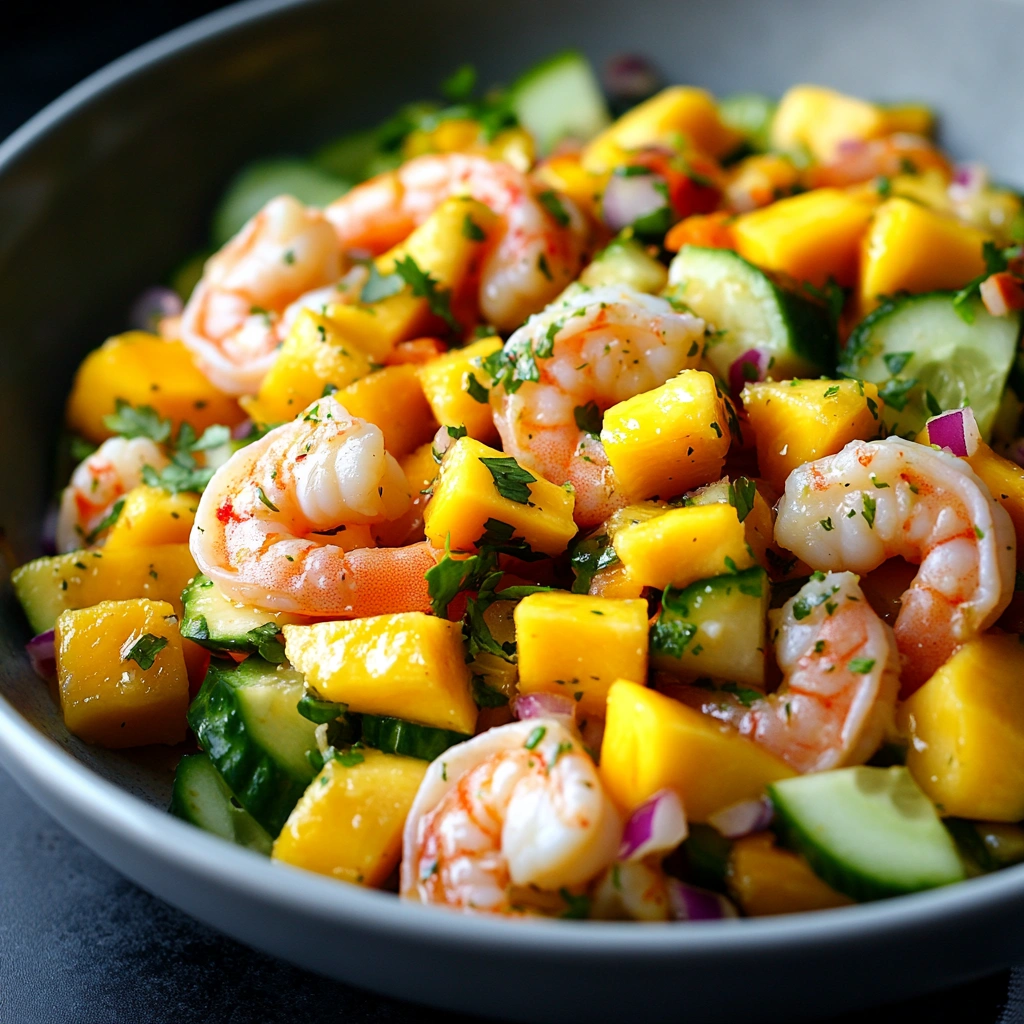
Tips for the Best Mango Shrimp Ceviche
Making a standout mango shrimp ceviche comes down to a few key techniques and ingredient choices. Here are the best tips to ensure your ceviche is vibrant, balanced, and restaurant-quality every time.
Start with the freshest shrimp possible. Whether you’re using pre-cooked or raw shrimp, freshness will make a noticeable difference in flavor and texture. If using raw, always ensure it’s sushi-grade or fresh enough to be safely “cooked” in citrus juice.
Use ripe but firm mangoes. The ideal mango should yield slightly to pressure without being mushy. Overripe mango can make the ceviche too sweet and soggy, while underripe mango will lack flavor.
Always use fresh-squeezed lime juice. Bottled lime juice lacks the brightness and acidity that fresh limes provide. Depending on your taste, you can blend in a splash of orange juice for a hint of natural sweetness.
Cut all ingredients into uniform, bite-sized pieces. This ensures even flavor distribution and a better mouthfeel. Small dice also helps with scooping if serving with chips or tostadas.
Let the ceviche chill for at least 30 minutes, but not much longer than 2 hours before serving. This gives the flavors time to blend without breaking down the texture of the shrimp and fruit.
Balance the flavor. Add a pinch of salt to enhance brightness, and don’t be afraid to adjust acidity with more lime if needed. You can also dial the heat up or down with more or less jalapeño.
Add avocado just before serving. Avocado adds creaminess but can brown or break down if left in the mixture too long.
Finally, serve it cold. Ceviche is meant to be refreshing, so make sure it’s well-chilled for the best experience.
Common Mistakes to Avoid
Even though mango shrimp ceviche is simple to make, a few common mistakes can affect the final result.
Overcooking the shrimp is a top issue. Whether boiling or citrus-curing, shrimp should be just opaque and tender—not rubbery. If you’re using pre-cooked shrimp, don’t marinate it for too long or it can become tough.
Using underripe or overly soft mango can throw off the texture and flavor balance. Aim for firm, sweet mangoes that hold their shape in the mix.
Avoid bottled lime juice. It lacks the bright, zesty punch needed for proper curing and flavor.
Too much marinating time can result in mushy texture, especially if avocado is mixed in early. Add delicate ingredients like avocado right before serving.
Lastly, not tasting and adjusting seasoning can make your ceviche fall flat. Taste as you go and tweak salt, lime, or chili to your liking.
Storage & Shelf Life
Ceviche is best enjoyed fresh, but with proper storage, you can safely enjoy leftovers for a short time.
If made with cooked shrimp, mango shrimp ceviche will keep in the refrigerator for up to 2 days. Store it in an airtight container, and make sure it remains well-chilled at all times. The citrus juice continues to “cook” and break down the shrimp and other ingredients, so texture may soften slightly after the first day.
If you used raw shrimp and relied solely on citrus to cure it, it’s best to consume the ceviche within 24 hours for safety and quality.
Avocado tends to brown over time, so if you’re planning to store ceviche, consider adding avocado to individual servings rather than mixing it into the whole batch.
Ceviche should never be frozen. Freezing ruins the texture of the shrimp and mango, and the acid in the marinade doesn’t hold up well during thawing.
When in doubt, discard any ceviche that smells off or appears slimy, as seafood spoils quickly. For the best experience, enjoy your mango shrimp ceviche within a few hours of preparing it.
FAQs – People Also Ask
Can you eat raw shrimp in ceviche?
Yes, but only if it’s very fresh and properly marinated in lime juice for at least 30–60 minutes. For safety, many prefer to use pre-cooked shrimp.
Is mango shrimp ceviche safe to eat?
Yes, especially when made with cooked shrimp. If using raw shrimp, ensure it’s sushi-grade and cured properly in citrus.
How long does shrimp need to marinate in lime juice?
Raw shrimp typically needs 30–60 minutes in lime juice to be fully “cooked” by the acid. Pre-cooked shrimp only needs 20–30 minutes to absorb flavor.
Can you use frozen shrimp for ceviche?
Yes, as long as it’s fully thawed and cooked. Avoid using previously frozen raw shrimp unless you plan to cook it first.
What fruit goes well with shrimp ceviche?
Mango is the most popular, but pineapple, papaya, and even citrus segments like orange or grapefruit work well too.

Mango Shrimp Ceviche
Description
This vibrant Mango Shrimp Ceviche is a tropical twist on a Latin American classic. Juicy shrimp, ripe mango, crisp red onion, and zesty lime juice come together for a refreshing, no-cook dish that’s perfect for warm-weather meals, light lunches, or elegant appetizers. Sweet, tangy, and a little spicy, it’s easy to customize and ideal for serving with chips, on tostadas, or straight from the bowl.
Ingredients
- 1 pound cooked large shrimp, cut into bite-sized pieces
- 1 cucumber, cut into bite-sized pieces
- 1 pint cherry tomatoes, halved
- 1 jalapeno pepper, thinly sliced
- 1 fresh mango, peeled, pitted, and cut into bite-sized pieces
- 1 lime, juiced (or more to taste)
- 2 tablespoons chopped fresh cilantro
- 1 tablespoon chili lime seasoning (such as Tajin®), or to taste
Instructions
- Combine shrimp, cucumber, tomatoes, jalapeno, mango, lime juice, cilantro, and Tajin seasoning in a large bowl.
- Taste and add more Tajin if desired.
- For enhanced flavor, cover the bowl and refrigerate for 1 hour (optional).
Notes
-
Shrimp Prep: You can use cooked shrimp for ease, or marinate raw shrimp in lime juice until opaque (about 30–60 minutes). If unsure about the safety of raw shrimp, opt for pre-cooked.
-
Mango Tips: Use mangoes that are ripe but still firm. Overripe mango can make the ceviche too mushy.
-
Citrus Juice: Always use freshly squeezed lime juice for the best flavor and proper “cooking” effect. Bottled lime juice isn’t recommended.
-
Add Avocado Last: If using avocado, mix it in just before serving to prevent browning and mushy texture.
-
Storage: Best enjoyed fresh within a few hours. Leftovers can be stored in an airtight container in the fridge for up to 1–2 days, depending on the shrimp used. Do not freeze.
-
Serving Suggestions: Serve in small glasses for a fancy appetizer, or pair with tortilla chips, plantain chips, or lettuce cups for a casual gathering.
-
Customization: Adjust spice level with more or less jalapeño. Add diced cucumber, tomatoes, or bell pepper for more crunch and color. Substitute mango with pineapple or papaya for a different fruity variation.


